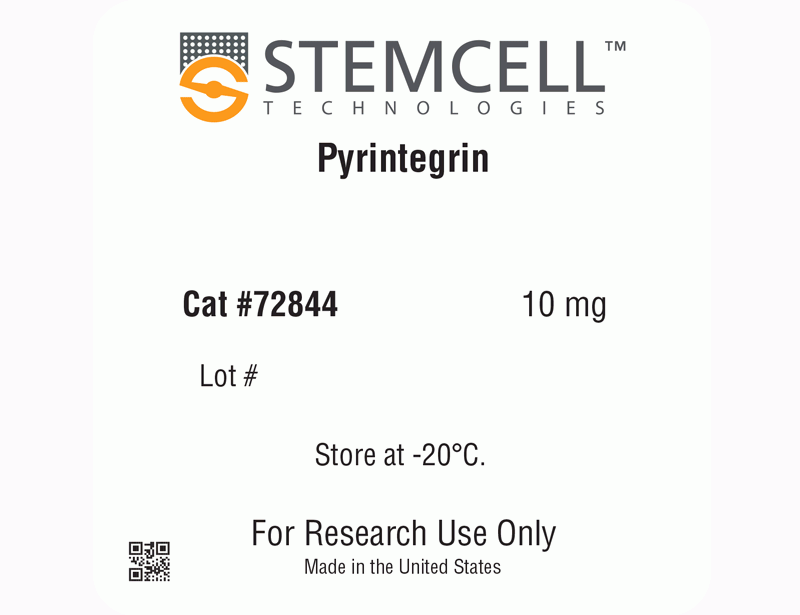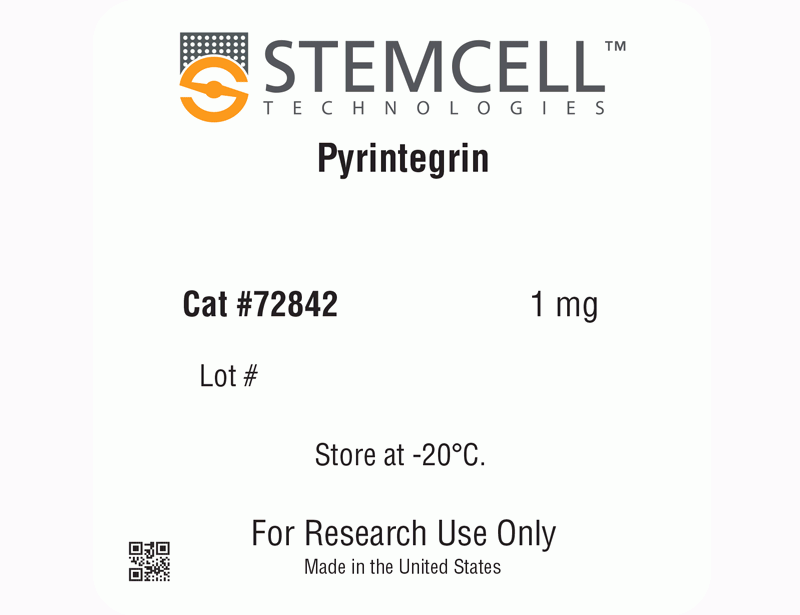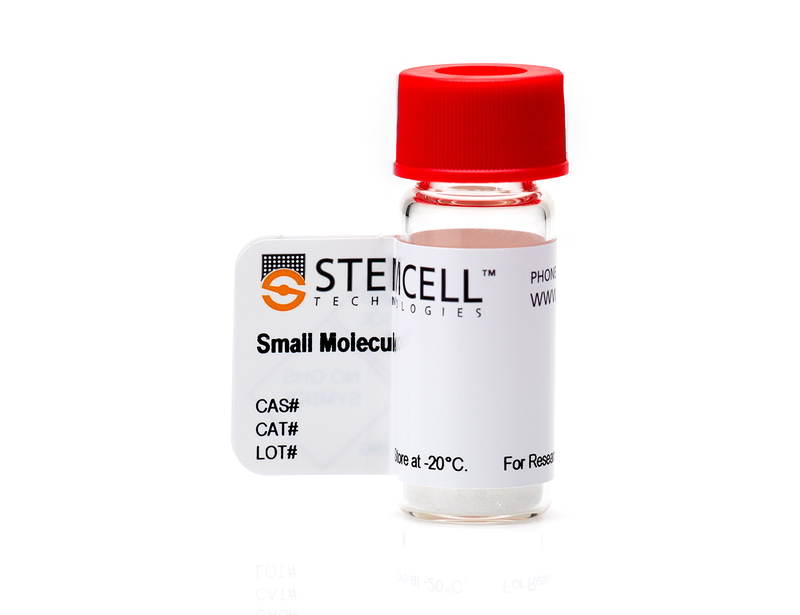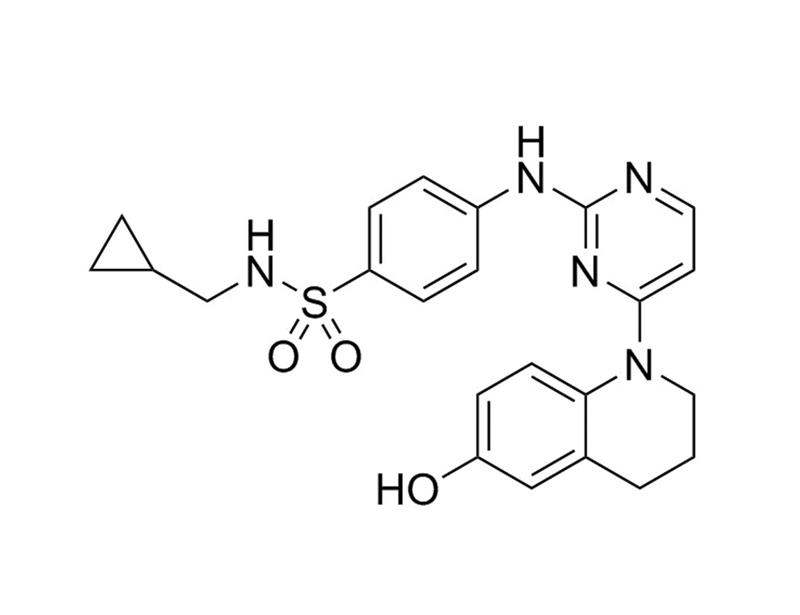Pyrintegrin
Integrin and tyrosine kinase activator; Activates Integrin, FGFR, IGFR and HER2
概要
Pyrintegrin is a 2,4-disubstituted pyrimidine that induces the activation of β1 integrin and multiple growth factor receptors, including FGFR1, IGFR1, EGFR1, and HER2 (Xu et al.).
MAINTENANCE AND SELF-RENEWAL
· Enhances integrin-dependent attachment and survival of human embryonic stem (ES) cells following trypsin-mediated single-cell dissociation (Xu et al.).
MAINTENANCE AND SELF-RENEWAL
· Enhances integrin-dependent attachment and survival of human embryonic stem (ES) cells following trypsin-mediated single-cell dissociation (Xu et al.).
Alternative Names
Not applicable
Cell Type
Pluripotent Stem Cells
Species
Human, Mouse, Rat, Non-Human Primate, Other
Application
Maintenance
Area of Interest
Stem Cell Biology
CAS Number
1228445-38-2
Chemical Formula
C₂₃H₂₅N₅O₃S
Molecular Weight
451.5 g/mol
Purity
≥ 95%
Pathway
Tyrosine Kinase, Integrin
Target
FGFR, HER2, IGFR, Integrin
技术资料
| Document Type | 产品名称 | Catalog # | Lot # | 语言 |
|---|---|---|---|---|
| Product Information Sheet | Pyrintegrin | 72842, 72844 | All | English |
| Safety Data Sheet | Pyrintegrin | 72842, 72844 | All | English |
数据及文献
Publications (1)
Proceedings of the National Academy of Sciences of the United States of America 2010 MAY
Revealing a core signaling regulatory mechanism for pluripotent stem cell survival and self-renewal by small molecules.
Abstract
Abstract
Using a high-throughput chemical screen, we identified two small molecules that enhance the survival of human embryonic stem cells (hESCs). By characterizing their mechanisms of action, we discovered an essential role of E-cadherin signaling for ESC survival. Specifically, we showed that the primary cause of hESC death following enzymatic dissociation comes from an irreparable disruption of E-cadherin signaling, which then leads to a fatal perturbation of integrin signaling. Furthermore, we found that stability of E-cadherin and the resulting survival of ESCs were controlled by specific growth factor signaling. Finally, we generated mESC-like hESCs by culturing them in mESC conditions. And these converted hESCs rely more on E-cadherin signaling and significantly less on integrin signaling. Our data suggest that differential usage of cell adhesion systems by ESCs to maintain self-renewal may explain their profound differences in terms of morphology, growth factor requirement, and sensitivity to enzymatic cell dissociation.




